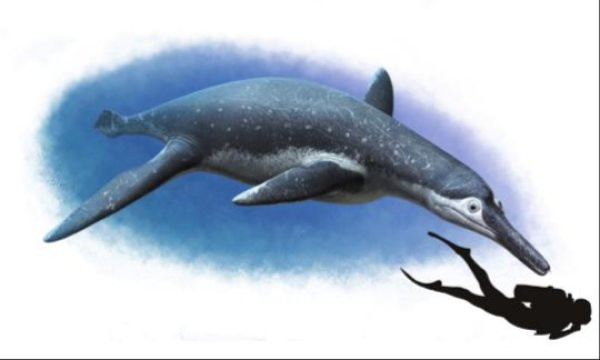130 million-year-old skull of unknown marine reptile species found in Russia
The new species has been dubbed Luskhan itilensis, meaning the Master Spirit.

Paleontologists have found the remains of an unknown type of pliosauroidea - an extinct marine reptile - that lived alongside the dinosaurs 130 million years ago on the bank of the Volga River in Russia. The skull of the reptile was first discovered in 2002, but until now had not been identified as a new species.
Pliosauroidea, better known as Pliosaurs, is believed to have lived 220-70 million years ago and their remains are mostly found in Europe. The new species has been dubbed "Luskhan itilensis," meaning the Master Spirit.
Pliosaurs existed from the earliest Jurassic to the early late Cretaceous period. They did have a long and large heads like many dinosaur species but had four big flippers, giant bodies up to two meters long, and could swim efficiently.
The beak of the latest fossil is assumed to have been extremely slender, resembling that of fish-eating aquatic animals like river dolphins. The newly discovered skull most likely belongs to a highly unusual pliosaurs from the Early Cretaceous period according to the researchers.
"This is the most striking feature, as it suggests that pliosaurs colonized a much wider range of ecological niches than previously assumed" said Valentin Fischer, lecturer at the University of Liege and lead author of the study.
The new find also suggest that pliosaurs were able to bounce back after the latest Jurassic extinction as the age of the skull discovered is estimated to be about 130 million years old. But they likely faced another extinction that wiped them off the depths of ancient oceans.
Pliosaurs have been known to be one of the dangerous predators ever and hunted fish, mollusks, and other marine inhabitants.
Read the detailed study of the discovery here.
© Copyright IBTimes 2025. All rights reserved.





















